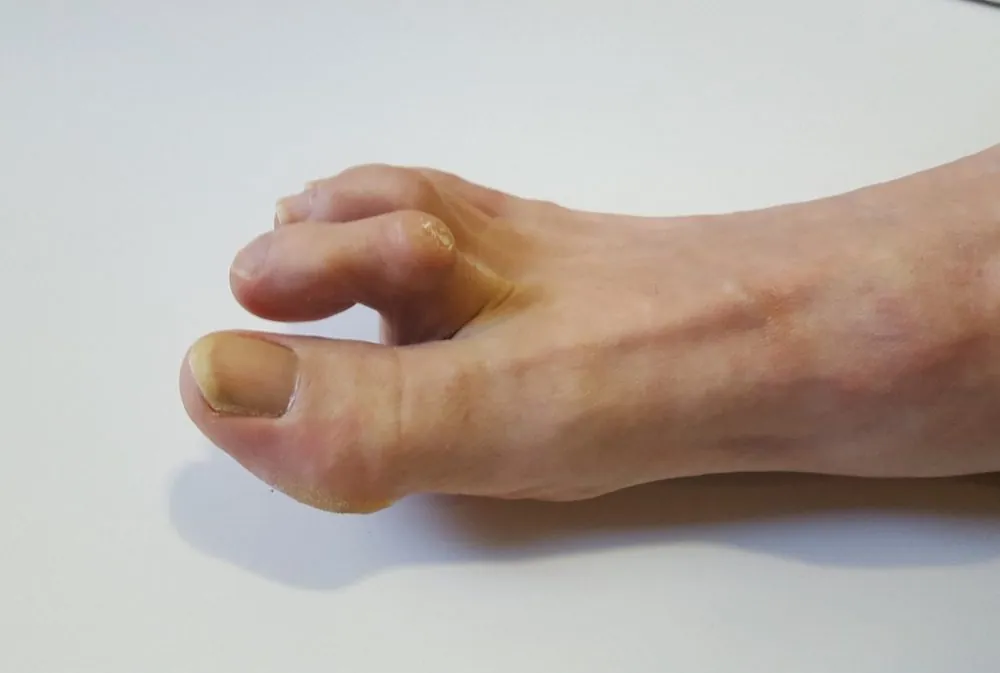In podiatry, hammertoes are a common problem. This condition is defined by a malformation of the forefoot at the toe joints, that causes discomfort and has a V-shaped or hooked look.
Because the deformity is typically painful, it is considered to be problematic. Wearing improper shoes, genetics, cavus or flat feet, inflammation of the joints, muscle stress, or a hallux valgus (foot bunion) can all contribute to hammertoes.
Here are some recommendations and treatment options for hammertoe pain prevention and relief. Most importantly, however, you should make sure to consult a podiatrist as soon as possible!
Can you prevent hammertoes?
There are a number of strategies to prevent or delay the onset of hammertoes. The type of shoes you wear can help you avoid developing this condition. Make sure you’re wearing shoes that are the right size for your feet, not too big or too little. Wearing high heels can aggravate the foot bunion, which can contribute to hammertoes. A decent shoe has to support your foot’s arch while also allowing room for your toes.
Blood sugar levels should also be monitored by diabetics to help prevent deformities. If you have a systemic ailment that can cause crooked toes, a podiatrist may consider prescribing foot orthoses. The use of foot orthoses on a daily basis can assist in alleviating biomechanical issues and avoiding the onset or aggravation of hammertoes.
To prevent the condition from becoming worse and your toes becoming rigid, consult a podiatrist as soon as the first symptoms of hammertoes arise.
What can a podiatrist do to help with hammertoes?
The pain caused by hammertoes can be relieved with a variety of treatments. When you see a podiatrist, you’ll be directed to the treatment that’s right for you. The available options include:
- Foot orthoses – They help you regain good muscular balance by steadying the mechanics of the foot. They also help prevent symptoms from getting worse.
- Orthoplasty (orthodigital insoles) – To eliminate shoe friction and reduce toe deformity, these custom silicone insoles are placed on the toes.
- Cortisone injection – To relieve joint discomfort, a cortisone injection is a more invasive treatment than taking an anti-inflammatory medication. It can be injected directly into the affected joint.
- Podiatric surgery – To permanently eliminate the problem, and only in the most serious cases, your podiatrist may recommend surgery. The affected joint, in the case of hammertoes, could be replaced with an implant or a metal rod.
At-home pain relief for hammertoes
Before or after your consultation with your podiatrist, try these home remedies to relieve hammertoe pain.
- Wear toe splints – Toe splints, unlike foot orthoses, are not custom-made. They can thus be a temporary or alternative way to relieve the pain of hammertoes. Inquire with your podiatrist about the numerous over-the-counter choices.
- Do mobility exercises – These may take place at home and should be done on a regular basis to help you move and strengthen your joints.
Choose the appropriate footwear – There are numerous aspects to consider while selecting shoes, including heel height, shoe size, shoe width, and stitching location. You can also hire a shoemaker to alter some of your shoes to give your toes more room if you have hammertoes. Your podiatrist can also assist you in making the best decision for your comfort.
PiedRéseau is here to help you relieve hammertoe pain
Are you looking for a long-term solution to your hammertoe pain? Make an appointment with a professional through PiedRéseau, which connects podiatrists with patients in more than forty clinics around Quebec.
It’s possible that pain in the forefoot is caused by hammertoe or another condition with similar symptoms. Consult a podiatrist right away to identify and cure your pain!

